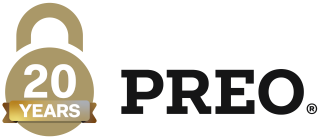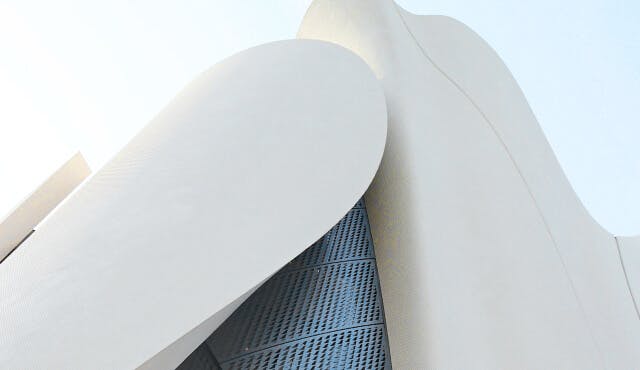Date:
22 Jun 2023
Author:
PREO AG
Green IT
How companies make a sustainable contribution with used software
Climate neutrality by 2050 is the goal of the EU Commission's European Green Deal. Germany aims to achieve this by 2045. Some member states are similarly ambitious or even go beyond that.
Even if the targets seem to be a long way off, the transformation process has already begun in many economic sectors because the challenges are immense at all levels. In order to continuously drive the necessary changes, the EU's Corporate Sustainability Reporting Directive (CSRD) ensures that the documentation and disclosure obligations that already exist in the context of sustainability reporting are gradually expanded from the current 11,700 companies across the EU to around 50,000 companies.
Disclosure obligation so far is only for large capital market-oriented companies
The reporting and disclosure obligation is based on the CSR Directive Implementation Act (CSR-RUG) and currently affects companies that employ more than 500 people, are capital market-oriented and have annual sales of more than 40 million euros or total assets of more than 20 million euros. In addition, there are banks, insurance companies and fund companies with and without a stock exchange listing.
The companies concerned must disclose detailed non-financial information in their management report or in a separate sustainability report and show how sustainably they act in the areas of ecology, economy and social affairs. There are currently no rigid reporting requirements. Therefore, both national and European sustainability reporting standards, such as those of the German Sustainability Code or the Global Reporting Initiative, currently serve as a basis.
Sustainability reporting - when does the disclosure obligation apply and to whom?
The extension of the disclosure obligation on the respective corporate status and progress in sustainability is planned in three stages. In addition to large companies, more and more medium-sized companies will also be included from January 2024.
Stage 1 > from 1 January 2024
Companies already subject to the CSR Directive and companies of the same size without capital market orientation.
Stage 2 > from 1 January 2025
Large and medium-sized enterprises that are not yet subject to the CSR Directive and meet two of the following three criteria: A balance sheet total of at least 20 million euros or net sales of at least 40 million euros and at least 250 employees.
Stage 3 > from 1 January 2026
Listed SMEs as well as for small and non-complex credit institutions or captive insurance companies.
According to current estimates, about 15,000 companies in Germany alone will be affected by the extension of the EU regulation, so that in addition to large companies, a large number of SMEs will also have to deal intensively with the topic of sustainability for the reporting year 2024 at the latest.
Important to know:
- Binding sustainability standards (European Sustainability Reporting Standards) will be defined at EU level before the end of 2023 in order to standardise reports and make them more comparable.
- In future, the sustainability information must be submitted to the auditors or an independent service provider before it is disclosed in order to ensure the highest possible level of information security through an external control body.
PREO Tip: Transition period for SMEs
Small and medium-sized enterprises (SMEs) can take advantage of a longer transition period via an opt-out regulation, so that they are exempt from the application of the directive until 2028. Nevertheless, it will be important to deal with the issue of corporate sustainability at an early stage and to test the effectiveness of individual measures. The use of used software licences is particularly suitable for medium-sized companies with a high proportion of stationary workstations. The PREO licensing experts will be happy to advise you personally on how your company can benefit from this in the long term.
Sustainable circular economy in IT through software reuse
In the course of the digitalisation of business and public administration, large sums of money are invested every year across Europe to be and remain up-to-date. Even with standard software such as Microsoft Windows or MS Office, a new licence version is released on average every two to three years to replace the existing one. New versions, however, usually exceed many of the requirements of everyday work, so that field-tested predecessor versions in most cases continue to meet workplace requirements for several years with full manufacturer support. However, since software, unlike most consumer products, does not age or show signs of wear and tear, it is particularly suitable for reuse. Provided that all legal requirements for the transfer of licences are met, there is nothing to be said against a second or even third recycling and thus the entry into a sustainable and resource-saving circular economy.
Longer hardware and software cycles as IT contribution to more sustainability
If you want to position your company sustainably, also against the background of the extended CSR reporting and disclosure obligations, you cannot avoid a resource-saving circular economy. This necessity is particularly evident in the IT sector in the company's internal usage cycles of the various hardware components, such as desktop and mini PCs, notebooks or servers. At an average of 4.9 years, these are clearly too short. Since hardware and software are coordinated dependent on the system, a powerful software upgrade often also causes a physical upgrade of the hardware side. For example, Microsoft Windows 10 requires about 40 times more processor power, 250 times more RAM and 320 times more hard drive capacity compared to its predecessor Windows 95. Even for companies with a low three-digit number of workstations, this leads to a considerable increase in energy and hardware resources, including the associated CO2 emissions.
In order to sustainably conserve global resources and operate in a climate-neutral manner in the long term, the usage cycles for hardware and software must also be significantly extended. The systematic secondary use of software can make a measurable and thus documentable contribution to this in the IT sector, which can be disclosed as part of CSR reporting.
Sustainable business - the advantages of used software licences
By integrating used software into their existing software landscape, companies not only benefit from high price advantages of up to 70 percent compared to the respective new version, but also make an active contribution to more sustainability. The advantages of buying or selling used volume licences from or to PREO are obvious:
- Active promotion of the circular economy in software asset management
- Worldwide conservation of resources through longer usage cycles of the hardware
- Reduction of the corporate CO2 footprint
- Effective contribution to corporate digital responsibility
- Proof that sustainable business is not just an image factor, but an important building block on the way to climate neutrality
Are you interested in our offers for a more sustainable software licence management? The PREO licensing experts will be happy to advise you personally and show you how you can sustainably reduce the burden on your company's IT budget with used software and actively contribute to climate protection.
Our motivation: More efficiency and sustainability for thousands of companies
As a pioneer in the European trade with used software, we have helped more than 5,000 companies, organisations and public institutions to achieve high savings and more sustainability in their software asset management with the legally compliant and audit-secure transfer of well over one million licences in the past ten years.
In our reference projects, which we have already successfully realised for numerous well-known companies, we show you in detail how this works in practice.









